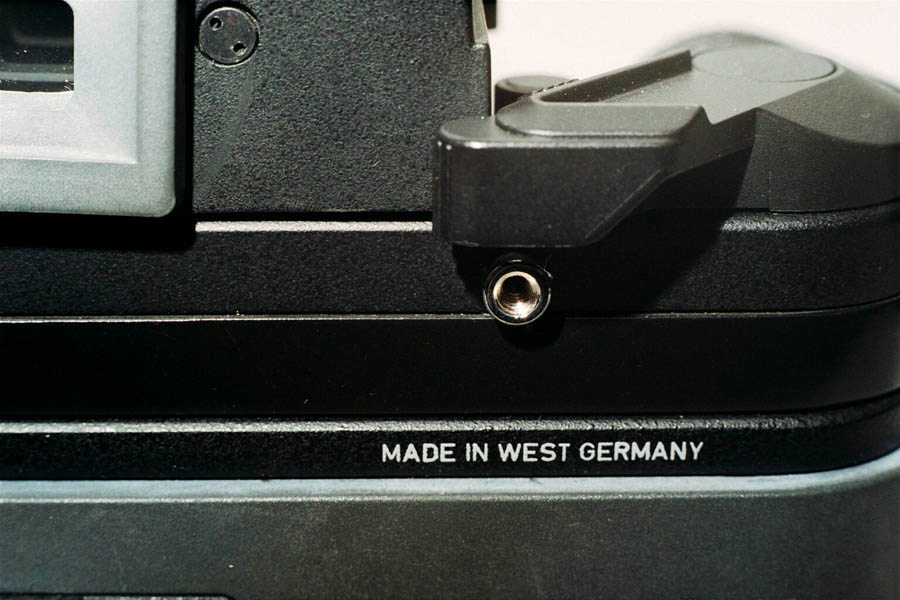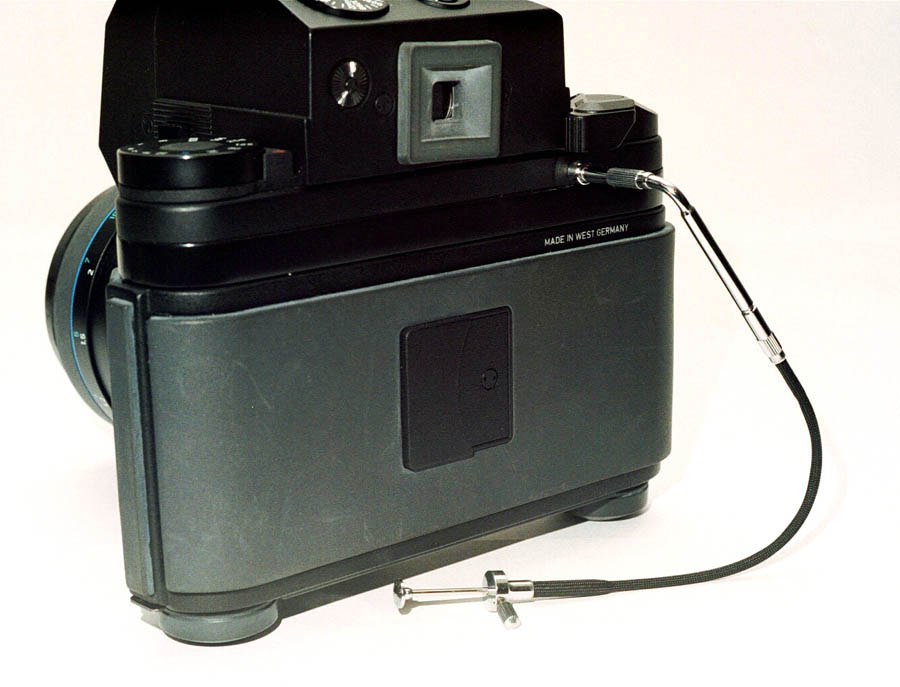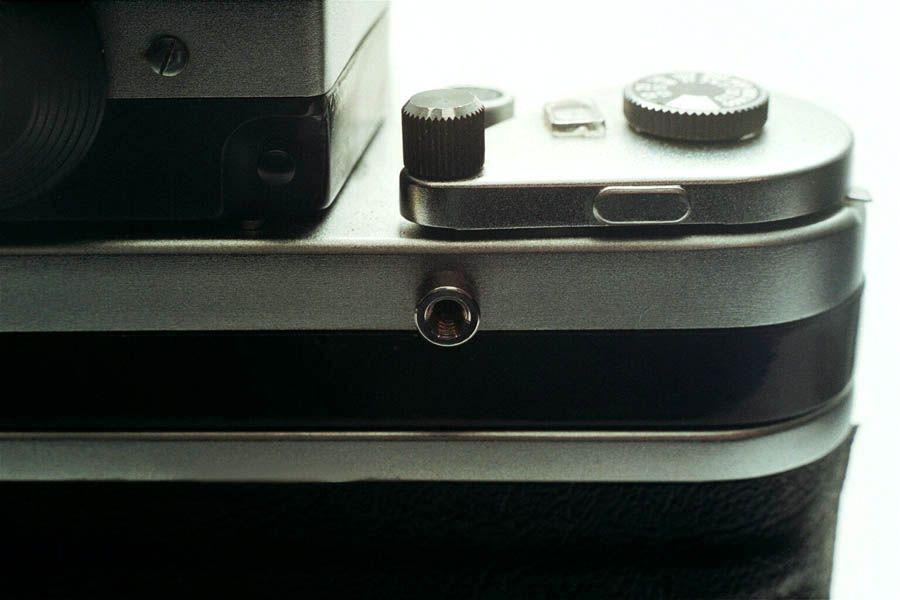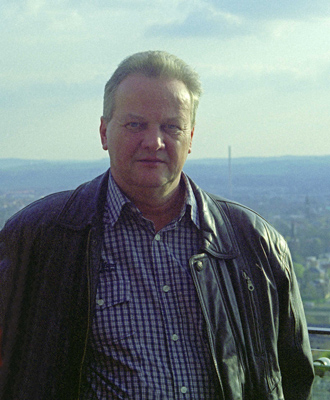|
The Pentacon Six System
by TRA
Mirror Pre-Release Mirror pre-release is also known as Mirror Lock Up or MLU. The theory is that when an SLR’s mirror swings out of the way as the shutter is released, as it hits the top of the mirror box it creates vibrations that degrade the image. In over twenty years of taking pictures with the Pentacon Six, I have not found this to be a problem in general picture taking. However, some would disagree with me, and since the late 60s various manufacturers have offered a mirror lock up or pre-release on their cameras. In 1968 the Minolta SR-T 101 35mm SLR had a nifty button for this, and the manufacturers suggested using it when taking macro photographs – where the degree of enlargement combined with the slow shutter speed could presumably result in degradation of the image. If you changed your mind about a shot after winding the mirror up, you could wind it back down. In Medium Format, the Hasselblad 500C offered a mirror lock up, which you could not, however, cancel. If you decided you didn’t want to take the picture after all, you could insert the dark slide, remove the back, and fire the shutter. Then re-cock the shutter to bring the mirror back down, replace the back, and remove the dark slide. Slow, but it worked. Why is all this necessary? Because, once the mirror is up, you can’t see anything through the viewfinder! You have in your hands a sophisticated Single Lens Reflex that is worse than a box camera! And there isn’t even a “sports finder” that fits the Hasselblad – or the Kiev 88-6. Exakta
66 & Pentacon Six Starting with the Exakta 66 Mk III, the manufacturers fitted a mirror lock up or pre-release. As with the Hasselblad 500C, it can’t be cancelled once activated. And as you can’t remove the back on an Exakta 66, once you’ve released it, you have to fire the shutter – but you could at least fit a direct vision finder in order to re-compose. The mirror pre-release uses a lockable cable release, connected to a new cable release socket on the back of the top plate, just under the advance lever.
I had the Mk II / Mk III advance lever installed soon after the mirror pre-release upgrade. This is slightly longer than the original Mk I lever, and much easier to use. I suspect that using the smaller Mk I lever with the new cable socket just below it might not be too convenient. It seemed to me that using the prism viewfinder with a cable release sticking out of the back of the camera was also a little inconvenient, or even uncomfortable. A good friend in California came to the rescue by sending me an angled extension for the cable release socket. This works beautifully, and the location of this socket no longer causes any problem at all.
Of more interest, Pentacon Service in Dresden offers to fit the mirror pre-release to the Exakta 66 Mk I and Mk II, and to the Pentacon Six! I have had my Exakta 66 Mk I and my Pentacon Six TL upgraded by them, and am pleased with the result. While making the upgrade, Pentacon serviced each camera.
Operation of this mirror pre-release
is cumbersome but useable. Pentacon recommend
it for slow shutter speeds, very long lenses and
macro work. In all these cases, the camera
will be mounted on a tripod, a virtual pre-requisite
for using a mirror lock up or pre-release.
How
does it work?
IMPORTANT INSTRUCTIONS! Like any mirror lock-up or pre-release system, this is designed for slow, methodical working. Most users will never need it. But for some shots it may make a vital difference to the sharpness of the image. Note that it is not possible to install the mirror pre-release on any version of the Praktisix, as the design of these cameras is quite different. Installers
of Mirror Lock Up / Mirror Pre-Release Pentacon GmbH Enderstrasse 92 [note slight change to address] D-01277 Dresden Germany Tel: 00 49 351 25 89 213 or 00 49 351 25 89 286 e-Mail: service@praktica.de or info@pentacon.de
Rolf-Dieter Baier used to offer an
alternative mirror pre-release system for the
Pentacon Six, but I have no personal experience of
it. At the time of writing, you can find
details of his system here
(in German) or here
(in English). However, in 2020 he
closed down his business.
Cameras with this Baier upgrade will no doubt be
much sought-after. Kiev
60 and Kiev 88-6/Kiev “B.i.G.-Six”/ Kiev
88CM To go back to the beginning of the macro section, click here. To go on to the next section, click
below. To return to the instructions front page, click here. To go back to the beginning of the
Accessories section, click below and then choose the
accessory that you want to read about. |



